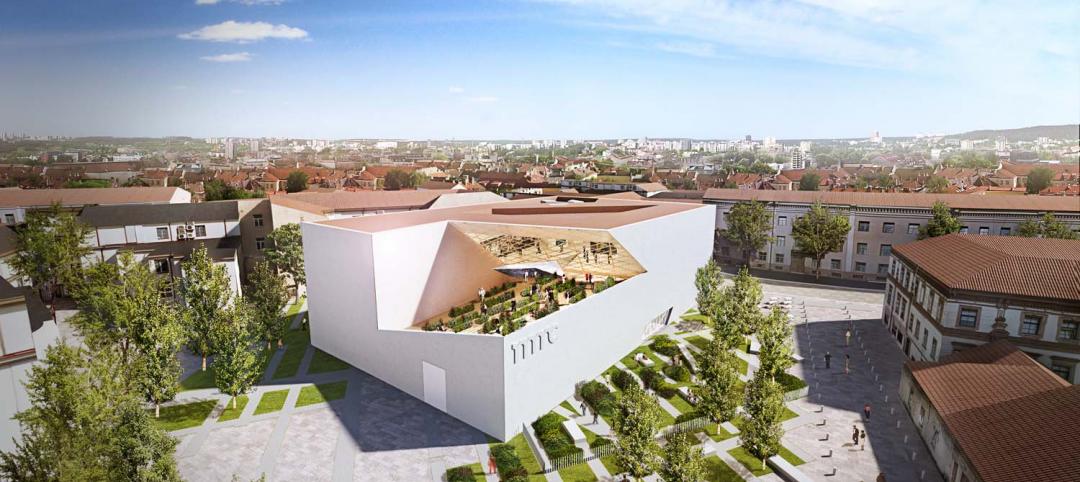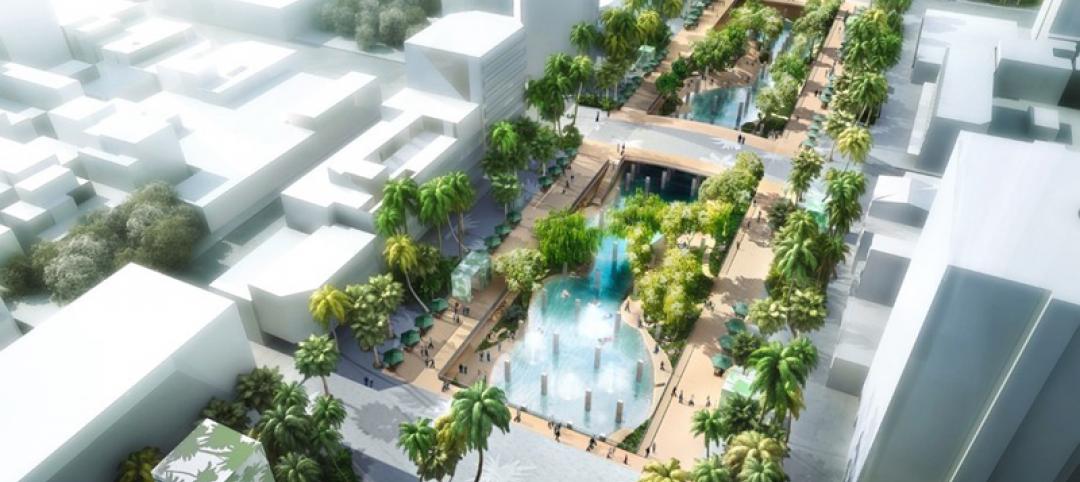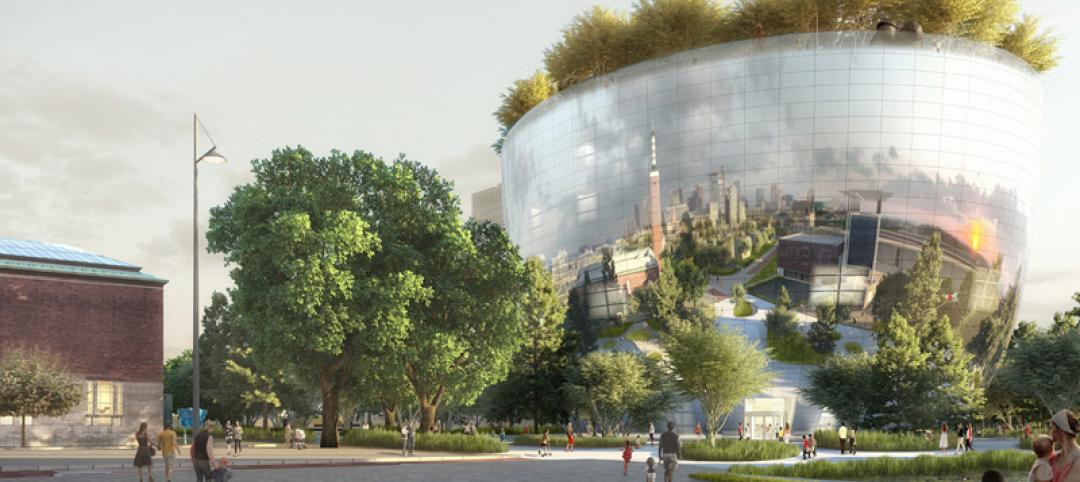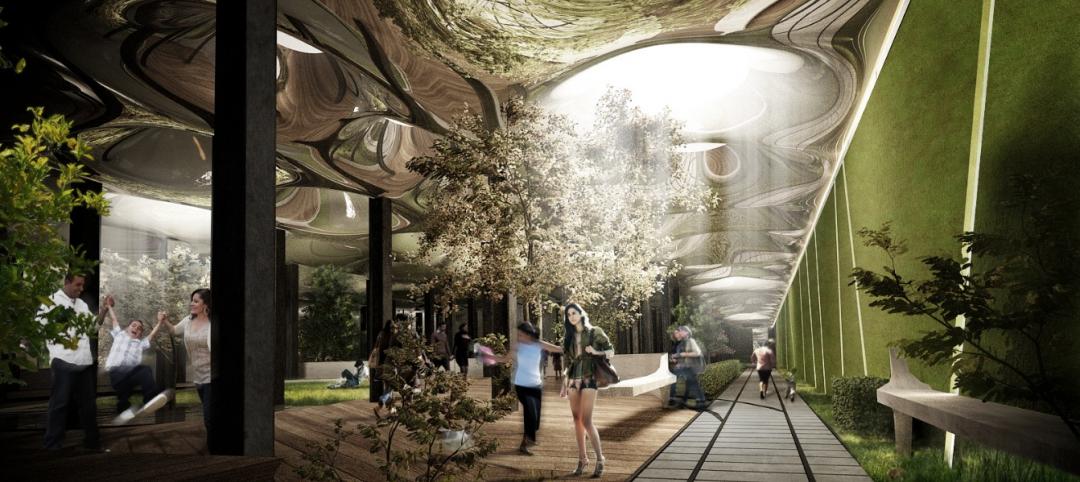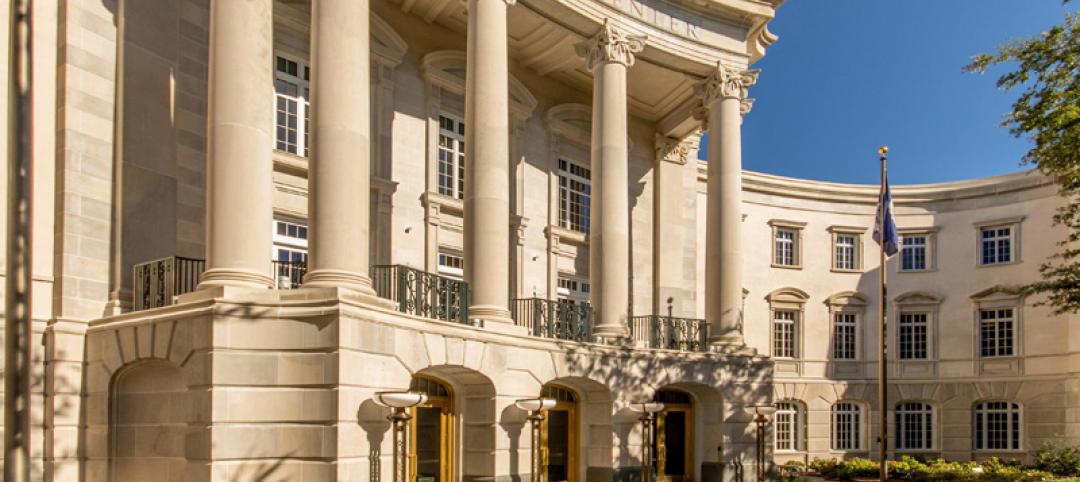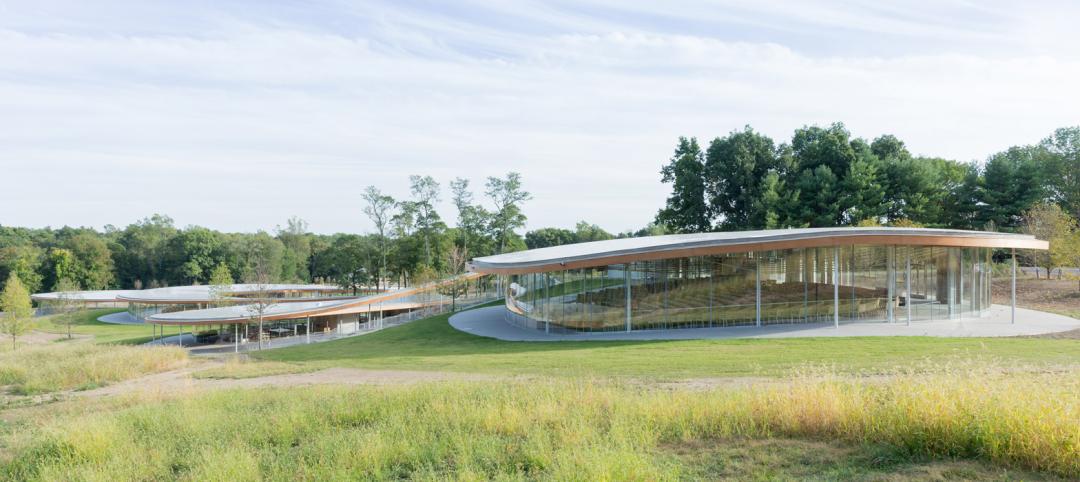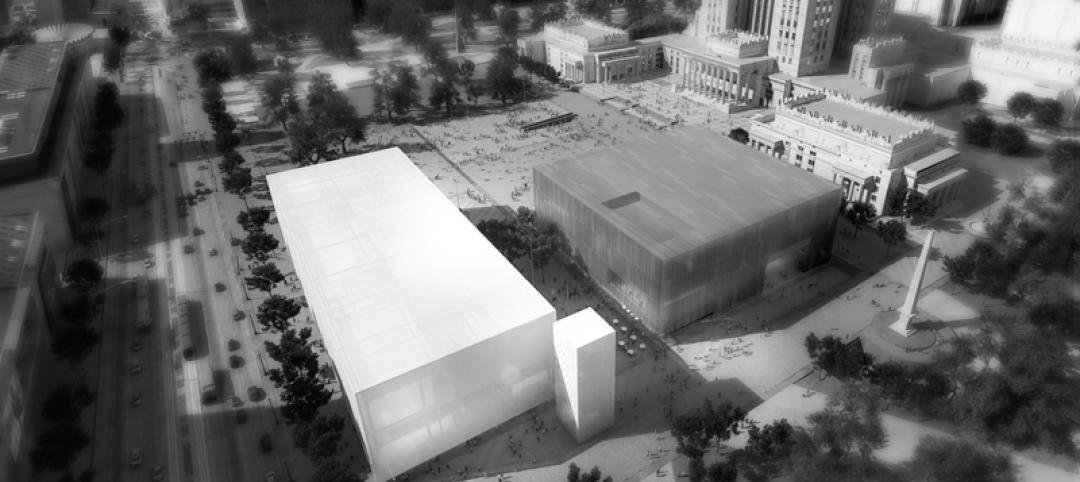The unique relationship between the people of Thailand and elephants dates back at least three centuries. Elephants were used in war and peace, and in rural villages were domesticated to the point where the beasts lived under the same roofs as humans, with their respective lives virtually inextricable.
Deforestation devastated that bond between elephants and the Kui people in northeast Thailand’s Surin Province, depriving both of food and medicinal plants. The province also incurred severe droughts. These events displaced the Kui and elephants to surrounding towns, begging for food or working in elephant camps.
Last month, as part of the government’s “Elephant World” plan that seeks a safe and prosperous reuniting of the Kui and elephants within their homeland, the Surin Provincial Administration Organization completed its Elephant Museum, which sits on a 5,400-sm site and used 480,000 handmade clay bricks in its construction.
Bangkok Project Studio, the museum’s architect, has incorporated handmade bricks for projects before, including the eight-meter-tall walls of the Kantana Film and Animation Institute, which opened in Nakhom Pathom, Thailand, in 2011; and more recently the Elephant Stadium pavilion at Elephant World in Surin, Thailand, completed in 2015.

The complex's curved walls provide visitors with different perspectives, depending on the time of day.
A MESSAGE OF HOPE

Visitors can move freely from one exhibit space to another through entries within the walls.

The Elephant Museum, built by Rattanachart Construction, Ltd., is divided into four sections. The first includes a reception area, exhibition room, library, seminar room, and shops for coffee and gifts. The other three sections feature exhibition spaces that touch on the relationship between the Thai people and elephants; the deforestation that places the elephants’ survival at risk; and a message of empowerment, where visitors can take pride in their culture.

The museum divides into four sections.
More than 200 elephants live in Surin Province, and the museum’s exhibits reiterate its people’s disapproval of animal cruelty and exploitation, while projecting hope for the future.
The museum, which was completed last month, is within a complex of buildings that includes a play area for elephants, a research center, and educational facilities. Visitors can circulate from one space to another through openings in arched walls. Indoor and outdoor areas allow for a variety of programming.

The museum includes a play area for elephants.
Related Stories
Museums | Dec 3, 2015
SANAA’s design selected for Hungary’s new National Gallery and Ludwig Museum
After months of deliberation, the Japanese firm ultimately won the tie with Snøhetta.
Museums | Nov 23, 2015
Daniel Libeskind unveils design for new Lithuanian modern art museum
Located in the national capital of Vilnius, the Modern Art Center will be home to 4,000 works of Lithuanian art.
Cultural Facilities | Nov 23, 2015
BIG plans for Pittsburgh: Bjarke Ingels’ Lower Hill District master plan evokes hilly topography
Paths will be carved to create a dialogue between Pittsburgh’s urbanscape and its hilly surroundings.
Cultural Facilities | Nov 17, 2015
MVRDV to turn outdated Taiwanese mall into urban lagoon
The firm's winning design honors Tainan’s natural landscape and historic role as a marine and fishing industry hotspot.
Museums | Nov 11, 2015
MVRDV designs a ‘disco ball’ for Rotterdam
Called the Collectiegebouw (Dutch for "collection building"), the building will make public the city’s extensive art collection, and give visitors a look at how museums work backstage, according to Fast Company.
Cultural Facilities | Oct 28, 2015
New York City’s underground 'Lowline' green space enters the testing phase
If realized, The Lowline would provide 1.5 acres of green space for the Lower East Side of Manhattan.
Sponsored | Cladding and Facade Systems | Oct 27, 2015
The 'new' Gaillard Center gets a standing ovation for its exterior cladding
The “new construction” surrounds three sides of the original building, offering both a classic public structure and exquisite outdoor spaces.
Cultural Facilities | Oct 9, 2015
Sanaa-designed cultural center opens at Connecticut’s Grace Farms
The 83,000-sf The River is five pavillions with space for a sanctuary, library, and gym.
Museums | Sep 29, 2015
Designs unveiled for Warsaw Art Museum and Theatre
Emphasizing the building’s role in the public sphere, the museum will be accessible from all sides.
Cultural Facilities | Sep 24, 2015
Bakpak Architects' 'pottery courtyard' concept in Poland incorporates local heritage
The multifunctional building proposed for Rzeszow, Poland, looks like it was handcrafted on a potter’s wheel.




